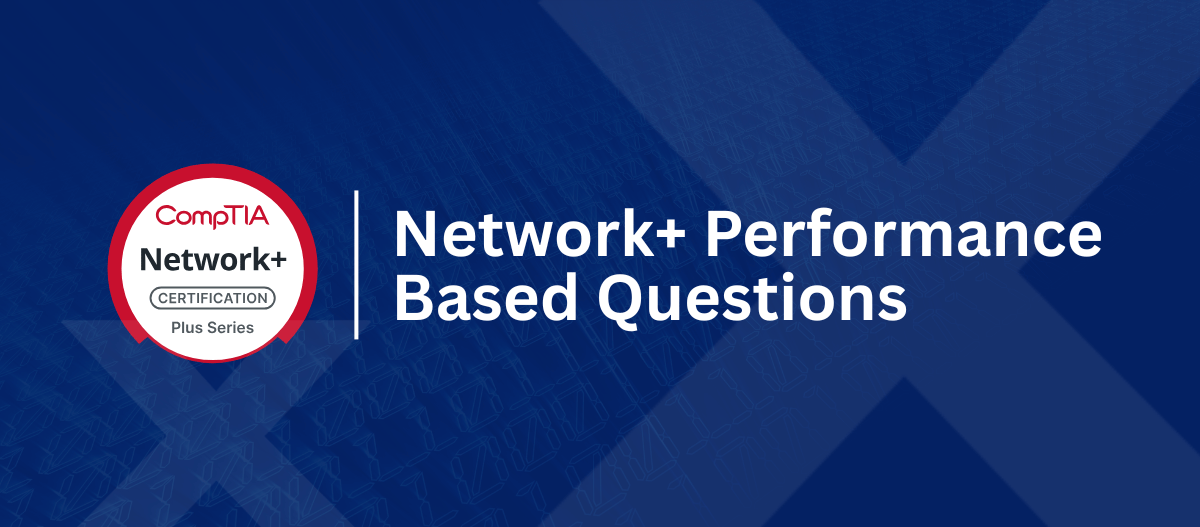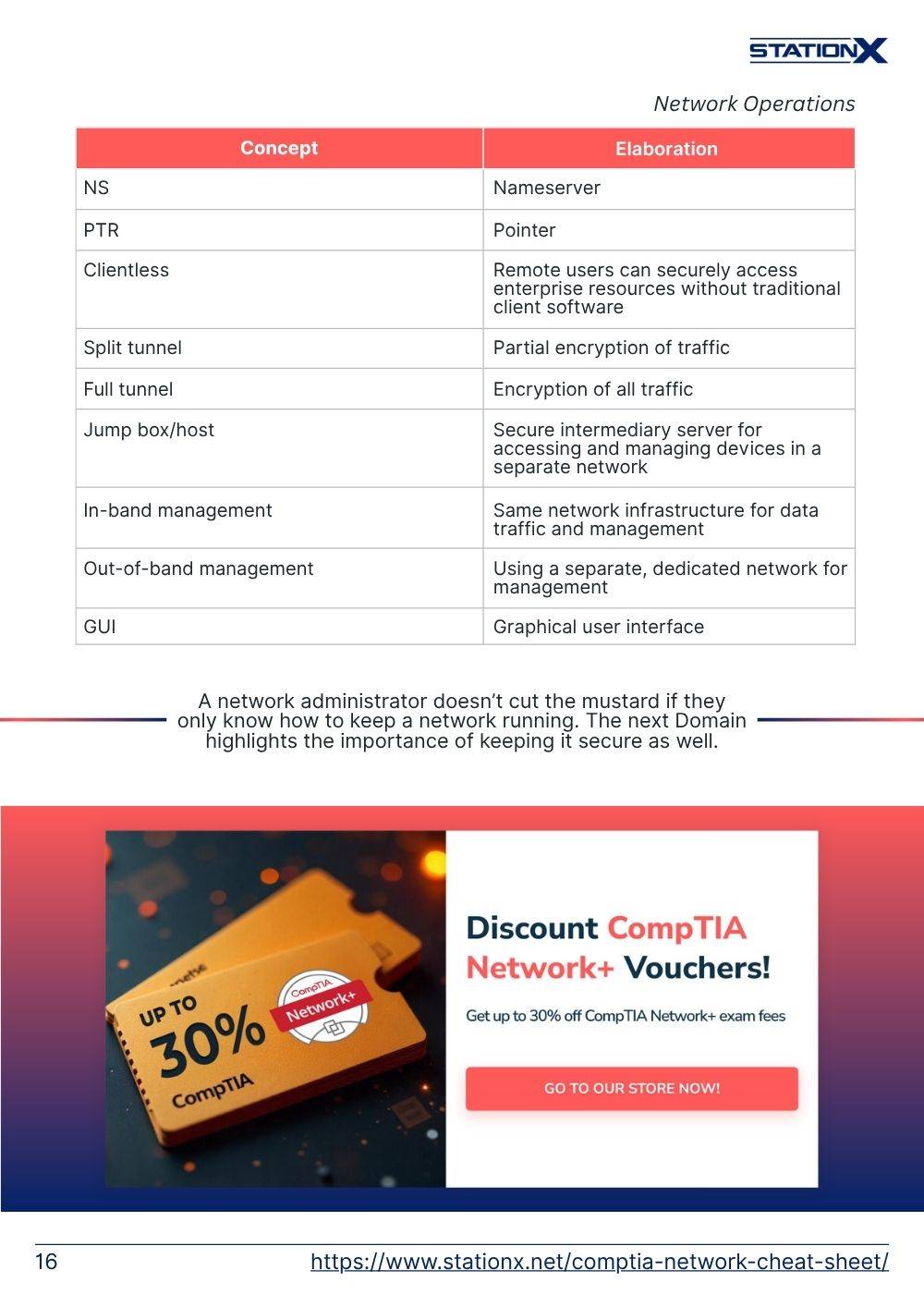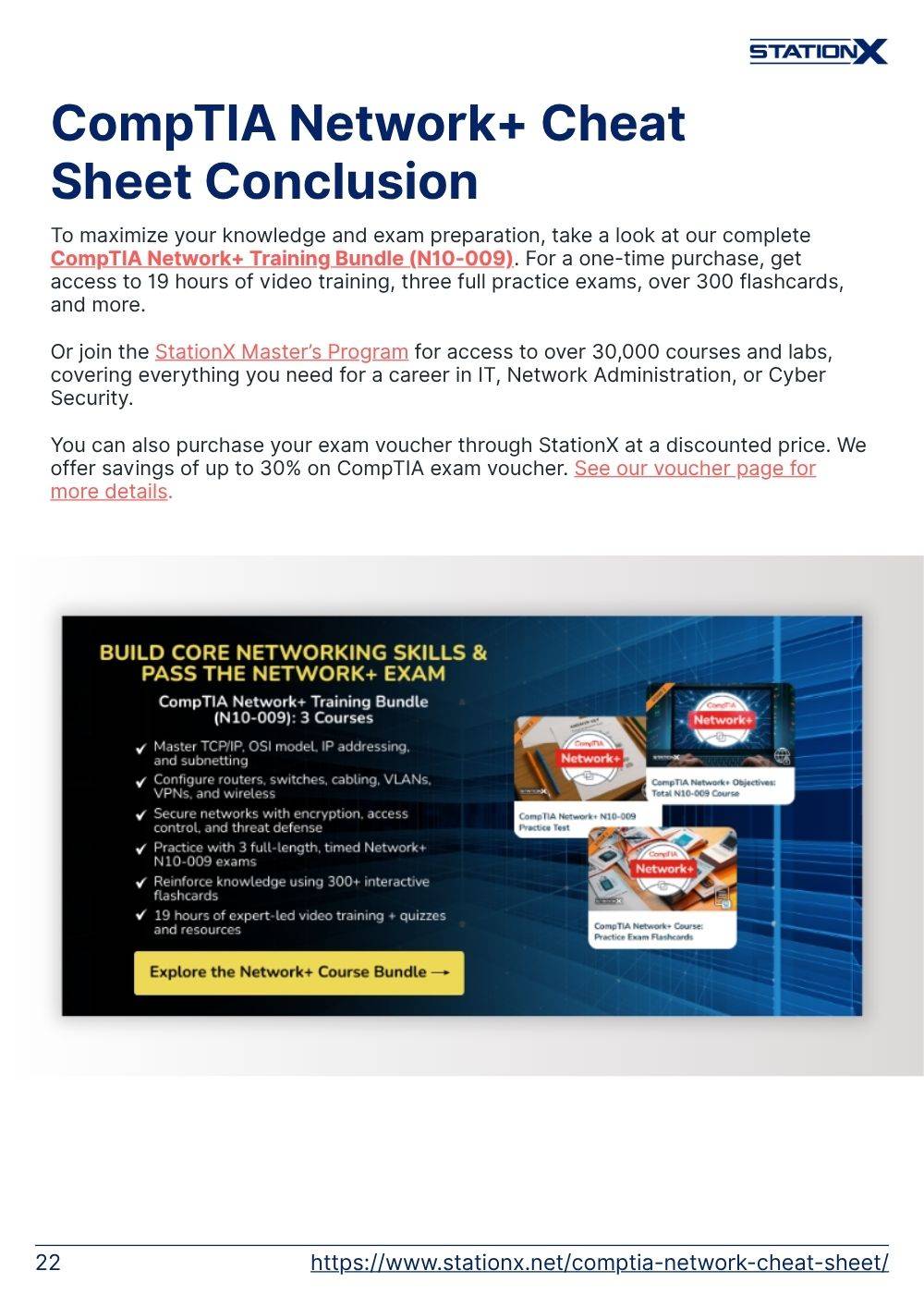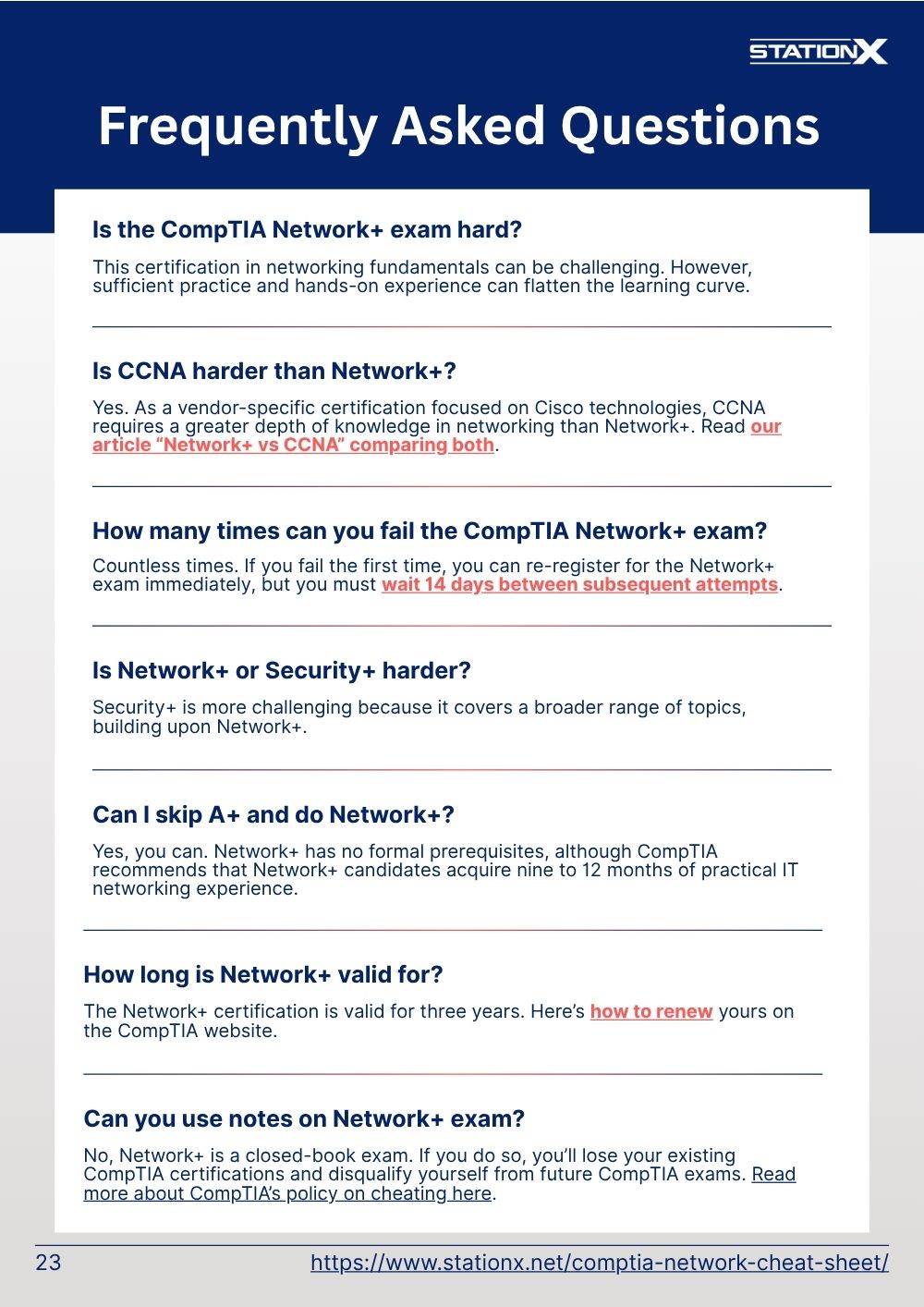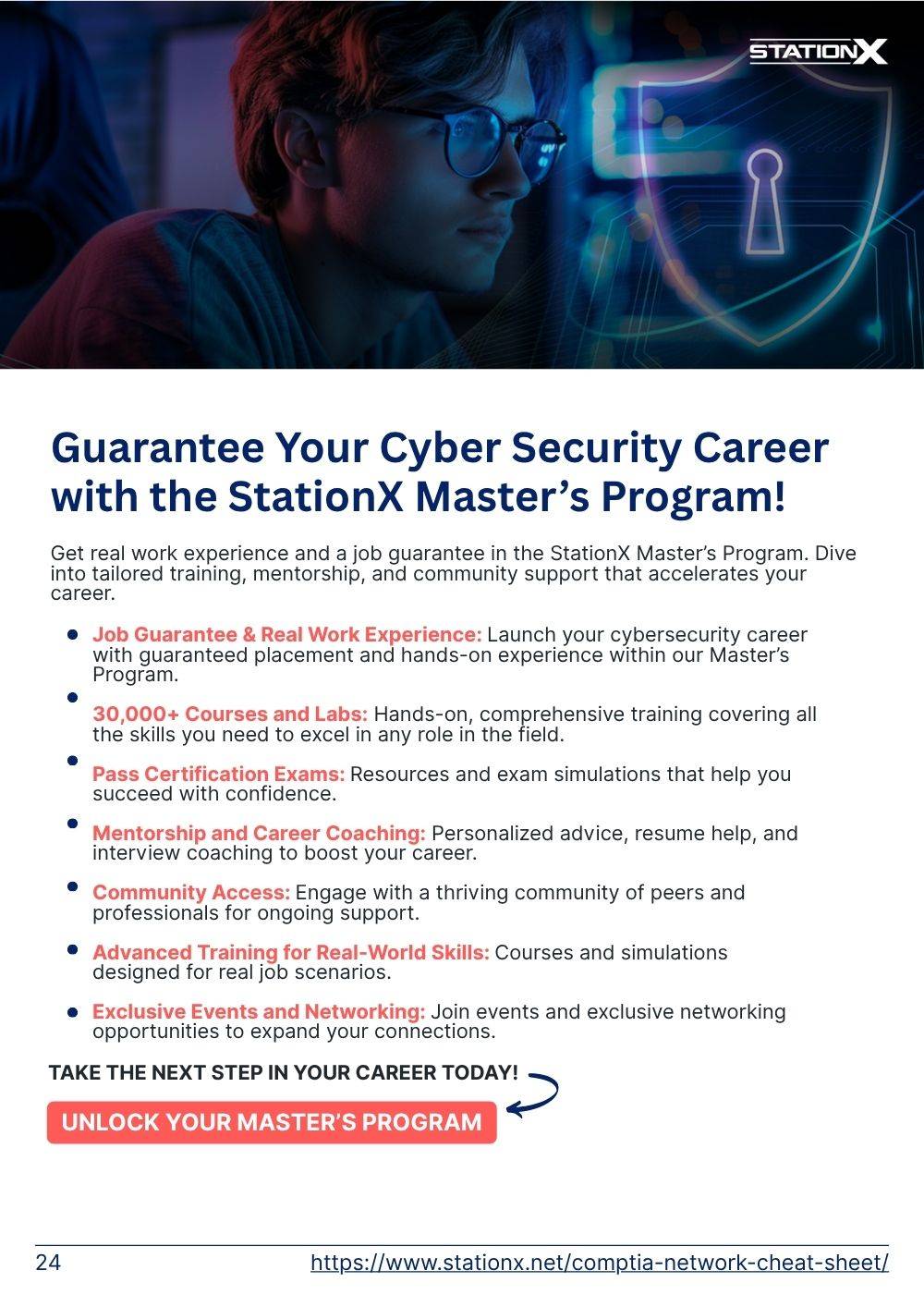In the CompTIA Network+ certification exam, you'll encounter a majority of multiple-choice questions and a significantly weighted minority of performance based questions. These PBQs can be the toughest part of the exam, posing unique challenges. How should you tackle them?
Look no further: this article is the answer you’re seeking. We start with an introduction to Network+ performance based questions, what they look like, what topics they cover, and our best tips for approaching them. By the end of this article, you'll have a clearer understanding of how to handle these difficult questions in the Network+ exam.
Mastering Network+ performance based questions (PBQs) quickly and accurately is crucial for success in the certification. Try out our sample performance based questions, then read on to learn more about what to expect on exam day.
- Table of Contents
- Try These Interactive Performance Based Questions
- What Are Performance Based Questions?
- How Many Performance Based Questions Can I Expect?
- How Are Performance Based Questions Scored?
- What Do Network+ Performance Based Questions Look Like?
- What Skills Are Tested in Network+ Performance Based Questions?
- Sample Network+ Performance Based Questions
- What Is the Best Way to Approach the Network+ Performance Based Questions?
- Conclusion
- Frequently Asked Questions
Table of Contents
- Interactive Performance Based Questions
- What Are Performance Based Questions?
- How Many Performance Based Questions Can I Expect?
- How Are Performance Based Questions Scored?
- What Do Performance Based Questions Look Like?
- What Skills Are Tested in Network+ Performance Based Questions?
- Sample Network+ Performance Based Questions
- What Is the Best Way to Approach the Network+ Performance Based Questions?
- Conclusion
- Frequently Asked Questions
Try These Interactive Performance Based Questions
The following simulate the types of questions you will see on the Network+ exam. While these are not actual exam questions, they share the type of wording and structure common to CompTIA performance based questions. We have two questions per domain.
Domain 1: Networking Concepts
Domain 2: Network Implementation
Domain 3: Network Operations
Domain 4: Network Security
Domain 5: Network Troubleshooting
What Are Performance Based Questions?
Most questions on the Network+ certification exam are of a multiple-choice format, with either single or multiple correct answers. A solid understanding of the study material, paired with effective test-taking strategies, will help you thrive in this section.
A significant factor contributing to the recognition of CompTIA certifications is the inclusion of performance based questions (PBQs). These PBQs evaluate your practical skills in networking. Excelling at these tasks shows your competency.
As a Network+ candidate, rather than manipulating physical devices, you’ll focus on solving graded labs (the PBQs) displayed on the computer during your exam. These are known as simulation PBQs. You can revisit them anytime throughout the exam, and you have the option to reset any simulation PBQs that you wish to attempt again.
Advanced CompTIA exams, such as SecurityX, contain a virtual environment in which you solve lab problems on the spot in a specified virtual machine (virtual PBQs). Unlike simulations, candidates cannot skip them or reset them. They must solve them right there and then.
The good news for a Network+ candidate like you is that Network+ PBQs don’t consist of virtual PBQs, only simulation PBQs.
How Many Performance Based Questions Can I Expect?
The Network+ exam contains a maximum of 90 questions, with a total allotted time of 90 minutes. While this might suggest you should answer one question per minute, remember that performance based questions (PBQs) require deeper thought, so you’ll likely spend more time on them than on multiple-choice questions.
Expect to see between one and ten PBQs at the beginning of each exam, with an average of five to six. Some PBQs may take longer to complete than others, and you won’t know which ones will be challenging until you encounter them. Therefore, it’s important to manage your time wisely during practice tests.
How Are Performance Based Questions Scored?
The Network+ exam lasts 90 minutes and features a maximum of 90 questions. As the number of performance based questions (PBQs) increases, the number of multiple-choice questions decreases.
CompTIA maintains that the details surrounding exam questions and the scoring scheme are confidential. Nonetheless, they acknowledge the existence of multiple valid approaches to solving PBQs. Their marking scheme accounts for these different methods and may offer partial credit. Alternative correct answers in approaching a PBQ can also earn you points.
There can be multiple ways to solve a question or challenge posed in a PBQ. Scoring addresses different possible approaches. Partial credit may be given to virtual PBQ, as it is for simulation PBQs.
— Performance based Questions Explained, CompTIA
What Do Network+ Performance Based Questions Look Like?
A performance based question (PBQ) fills the screen, featuring instructions and navigation buttons. The next and previous buttons allow you to move between questions, while the reset button returns a question to its original state if you need a fresh start after making a mistake.
In simulation PBQs, which you’ll encounter in Network+, you can hide the instructions to view the entire layout and bring them back when you need to recall the tasks at hand. You may have to press an additional Done, Save, or Submit button for some of these PBQs, so read the instructions carefully.
PBQs appear in several formats:
- Fill-in-the-Blank: Simple questions requiring you to input answers directly.
- Drag-and-Drop: You move items like images or text boxes into designated areas to match larger layouts, such as tables.
- Scenario: These detailed questions involve open dialog boxes or configuration windows where you must set various elements as instructed.
These versatile questions cover a range of topics and may include dynamic elements like checkboxes, open dialog boxes, dropdown menus, and radio buttons, similar to web forms.
A strong grasp of foundational knowledge helps you respond correctly and quickly during the exam. Therefore, it’s crucial to master the key concepts in Network+ through diligent study and practice rather than fixating on specific techniques for addressing the varied formats of these PBQs.
What Skills Are Tested in Network+ Performance Based Questions?
The primary purpose of performance based questions (PBQs) is to evaluate your practical skills as a network system administrator and ensure your expertise aligns with current industry standards. PBQs assess your problem-solving abilities in several key areas, including:
- Explaining basic data center, cloud, and virtual networking concepts;
- Establishing network connectivity by deploying both wired and wireless devices;
- Monitoring and troubleshooting network performance to maintain efficiency;
- Implementing network security hardening techniques to protect against threats;
- Configuring common network services to ensure optimal functionality; and
- Managing network documentation and infrastructure for effective operations.
When reviewing your materials, keep practical applications in mind. Make it a priority to practice as many Network+ PBQs as necessary to solidify your understanding.
Sample Network+ Performance Based Questions
As CompTIA keeps its exam questions confidential, the following sample Network+ performance based questions (PBQs) are not actual exam questions, but they exemplify what you can expect during your test. Familiarizing yourself with them will help minimize unwanted surprises on exam day.
We’ll showcase examples of different PBQ types you might encounter in the Network+ exam, ranging from the easiest to the most complex.
Fill-In-The-Blank Question:
This relatively straightforward PBQ requires you to fill in the correct information based on your knowledge of common ports and protocols. In this case, you need a strong grasp of what ports and protocols have corresponding encrypted versions of themselves.
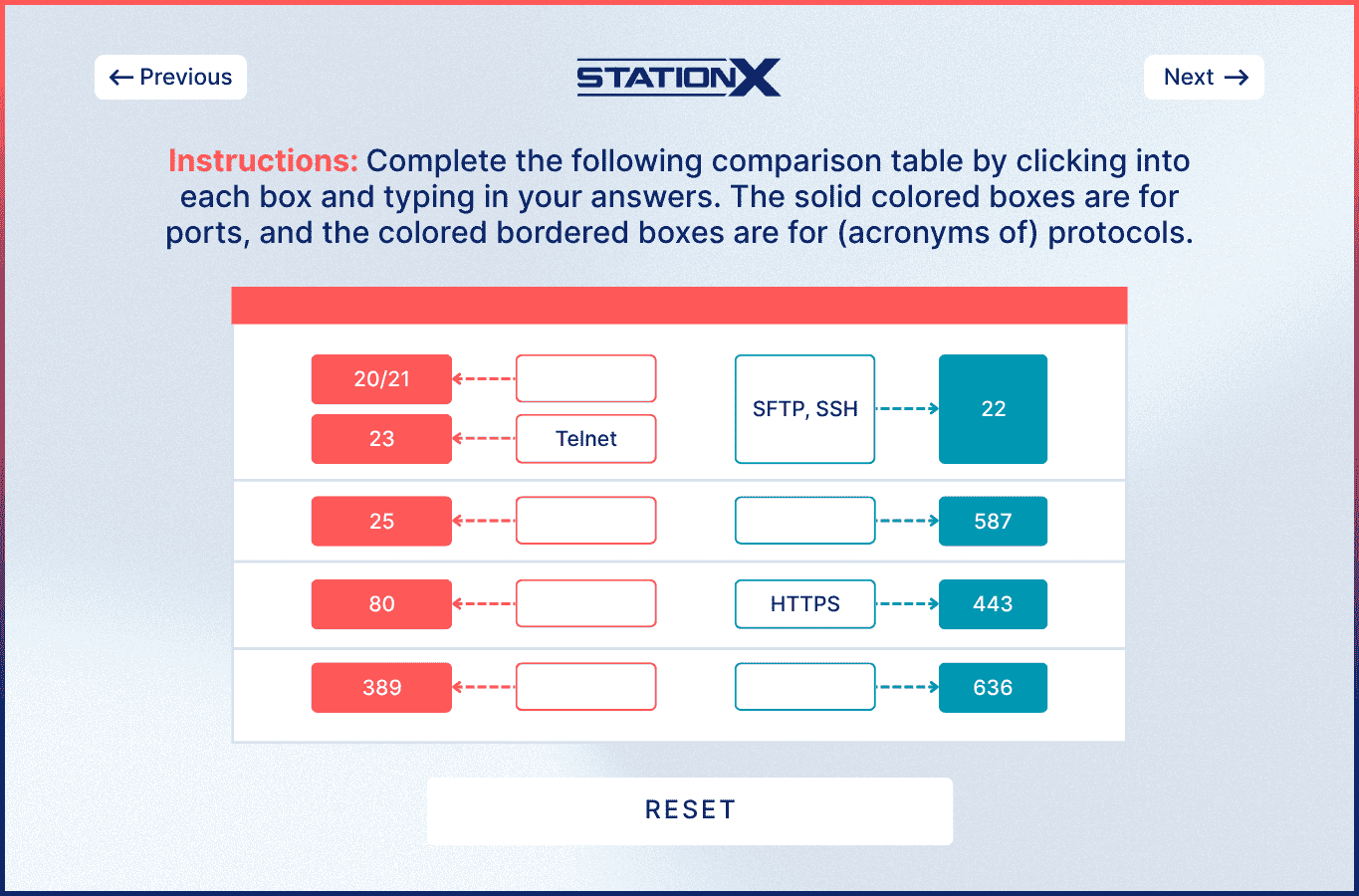
Accuracy is crucial; missing even a small detail, such as making a typo in the example above, could result in lost points. Thankfully, the next type of PBQ is typo-proof.
Drag-and-Drop Question:
This type involves matching or arranging answers correctly. A sample PBQ might assess your understanding of fundamental networking principles, such as establishing connections between devices or troubleshooting configurations. In this example, your task is to arrange the layers of the OSI model in the correct order:
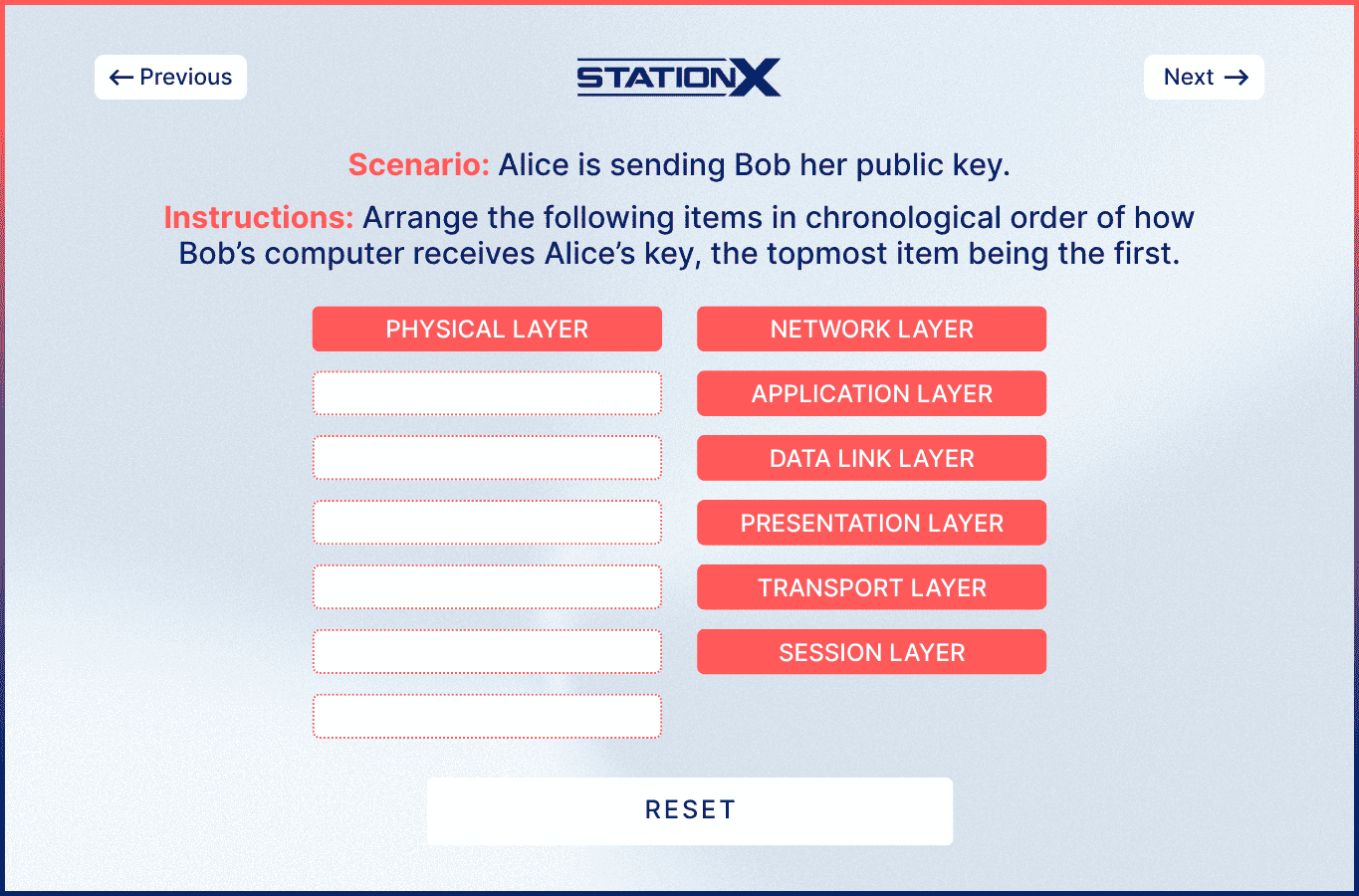
In the example above, since it’s asking you about outbound data transfer (such as emails and instant messages), and the use of “public key” is there (to check if you know about Public Key Infrastructure), the topmost answer would be Physical Layer, followed by Data Link Layer, and so on.
If you know your stuff well, you can excel in this question quite easily. The next section is about the greatest challenge in PBQs.
Scenario Question:
Scenario PBQs provide practical contexts where you’ll demonstrate your ability to solve real-world networking problems. A well-prepared Network+ candidate will find these questions to be great opportunities to showcase problem-solving skills, like configuring network devices or implementing security measures.
Most scenario questions can be quite involved. Here is a straightforward scenario question that falls within the scope of the Internet of Things (IoT).
In a question like this, you would be required to interact with the command prompt, choosing the correct commands to get the information you need. Then you would use that information to answer the question, whether that was a multiple-choice or a fill-in-the-blank.
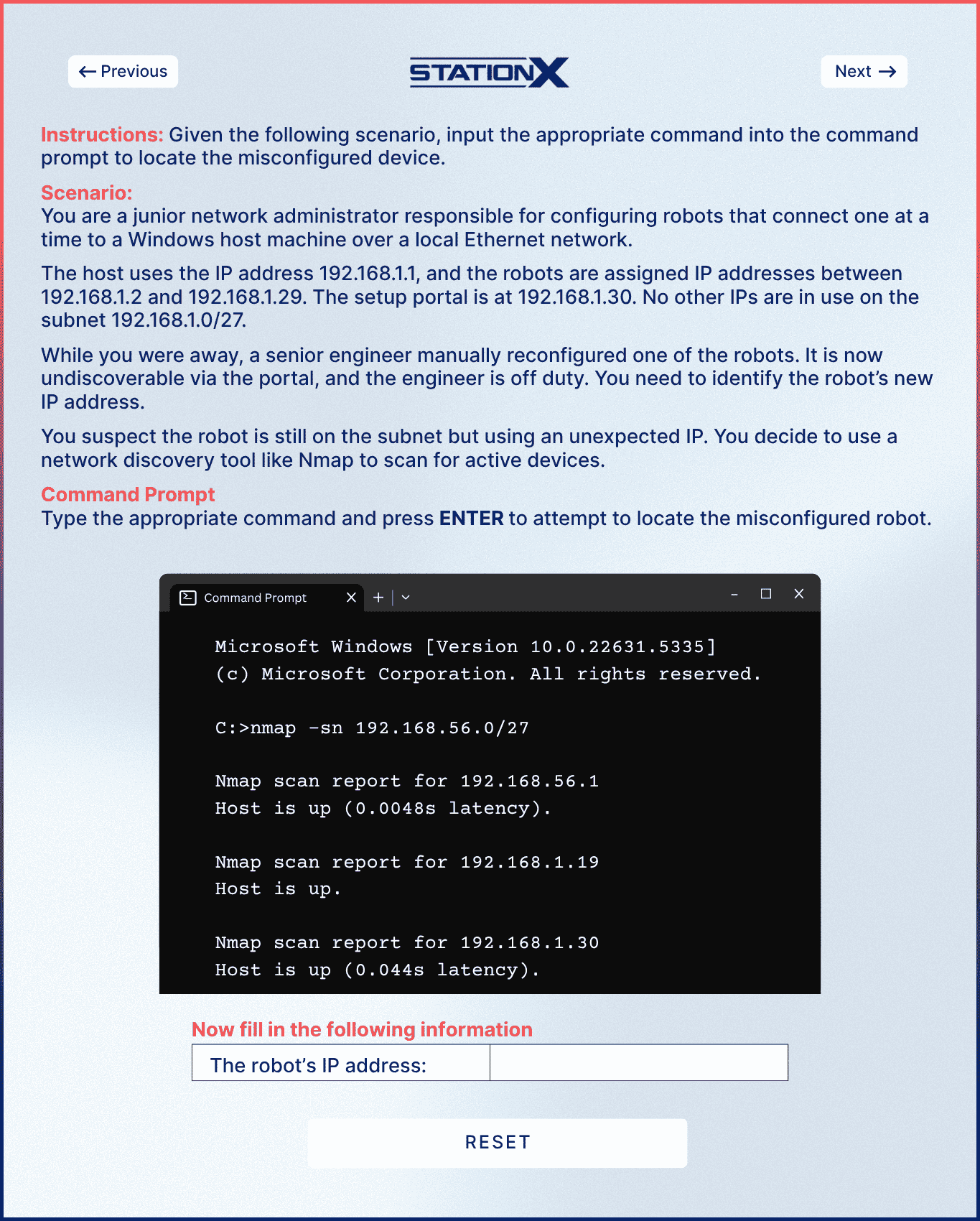
The scenarios often test your knowledge on various topics, ensuring you are ready to answer questions relevant to network operations. By preparing adequately and practicing these types of PBQs, you'll develop the confidence needed to excel in the Network+ exam.
What Is the Best Way to Approach the Network+ Performance Based Questions?
PBQs come first in the exam, followed by multiple-choice questions. Should you tackle them first or last? It depends on your testing style, which emphasizes the importance of practice tests.
- If your practice indicates you're at risk of losing points due to time constraints with PBQs, start with them.
- Conversely, if you perform well on multiple-choice questions and feel you have enough time for the PBQs, consider completing the latter last.
Should you experience a mental block during a PBQ, use the “Mark Question” option to revisit it later. Just remember, marking a question doesn’t mean you’ve answered it, so make sure to review all marked questions before time runs out.
Reading the instructions carefully is essential for correctly answering in both scenarios. If you make an error, you can reset the simulation, but you won’t be able to recover any lost time. Ultimately, the best approach to handling Network+ PBQs depends on your time management.
Conclusion
Although the Network+ exam is certainly challenging, it is achievable for anyone dedicated to investing the necessary time and effort. We trust that this article on CompTIA Network+ performance based questions provides you with valuable insights for your preparation, allowing you to proudly display your Network+ Certification on your profile in advancing your IT career.
But it’s not right for us to leave you in the dark, scrambling for the best way to study for Network+. To maximize your knowledge and exam preparation, take a look at our complete CompTIA Network+ Training Bundle (N10-009), which is on sale now at $19 USD.
For a one-time purchase, get access to 19 hours of video training, three full practice exams, over 300 flashcards, and more. Click the banner below. Or join the StationX Master’s Program for access to over 30,000 courses and labs, covering everything you need for a career in IT, Network Administration, or Cyber Security.
You can also purchase your exam voucher through StationX at a discounted price. We offer savings of up to 30% on any CompTIA exam voucher. See our voucher page for more details.
No matter where you go next, we wish you all the best.
This bundle contains:
- CompTIA Network+ Objectives: Total N10-009 Course
- CompTIA Network+ N10-009 Practice Test
- CompTIA Network+ Course: Practice Exam Flashcards
